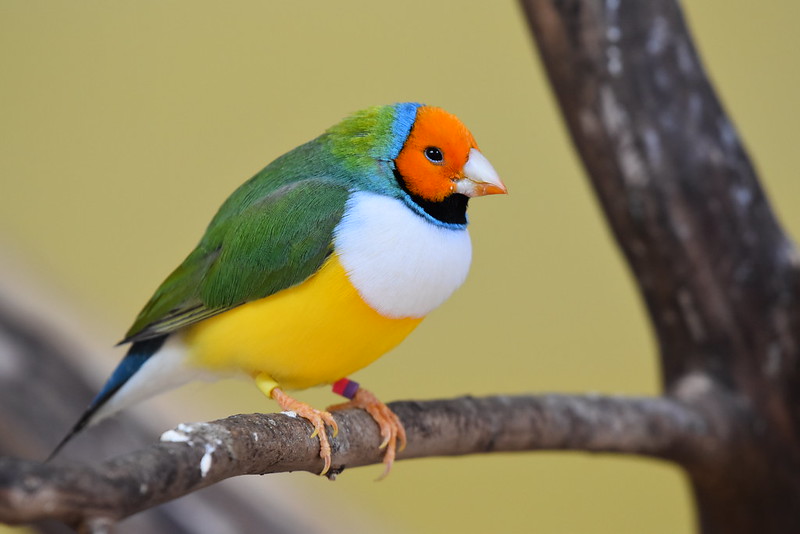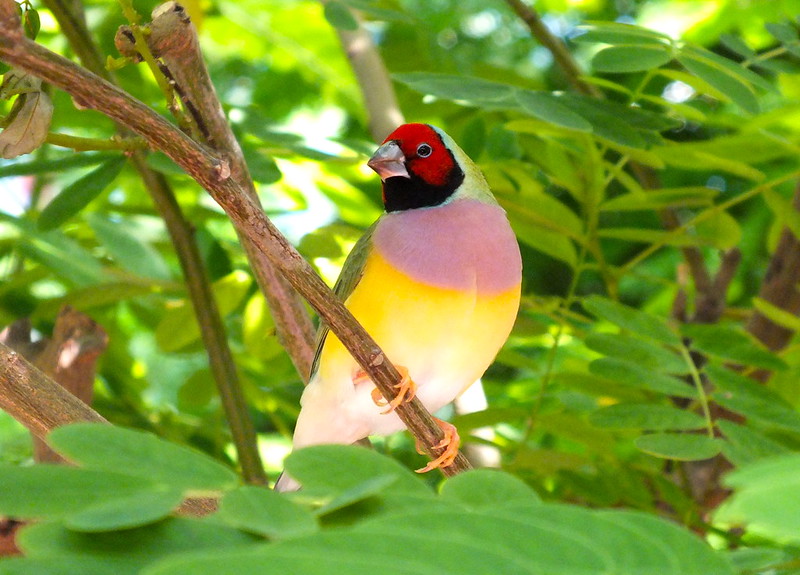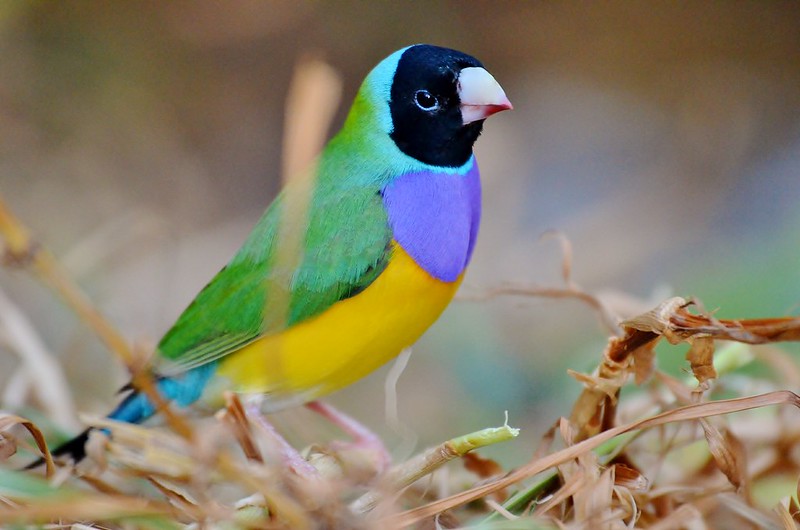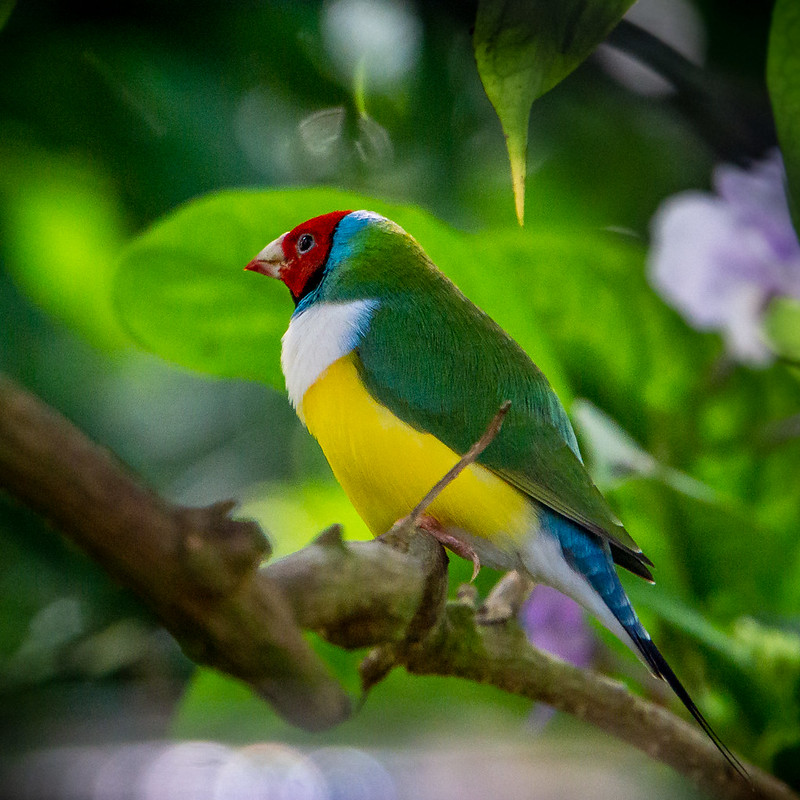
The Rainbow Finch is easily recognizable due to its vibrant and striking plumage, which displays a stunning mix of green, yellow, purple, and blue shades.

The Gouldian finch, also known as the Lady Gouldian finch, Gould’s finch, or rainbow finch, is a passerine bird native to Australia. These birds are known for their vibrant colors and measure between 4.7 to 5.9 inches in length with a weight of 0.49 to 0.53 oz. The males have a striking appearance with a combination of black, green, yellow, red, and blue feathers. The Rainbow finch has a head that can be red, black, or yellow accompanied by a flesh-colored beak. During breeding season, the tips of their beaks turn into a bright red, orange, or black color.

Although the male bird boasts brighter hues, the female is relatively less colorful. The key distinguishing factor between the two is the male’s purple chest, whereas the female sports a lighter mauve hue. Young birds are equally unique in their appearance, featuring gray heads, sides, and necks, complemented by olive green backs, wings, and tail feathers.

These charming avian creatures are exclusive to the northern region of Australia. There have been some scattered sightings recorded from the Cape York Peninsula all the way to north-west Queensland, and from the Northern Territory to the Kimberley area of Western Australia.

The Rainbow finch is a well-known bird that is often kept in cages, but in the wild, they gather in huge flocks of up to 1000 – 2000 birds, possibly to protect themselves from predators. They prefer rough scree slopes with little vegetation during their breeding season but become more nomadic during the dry season when they move to areas with food and water.

Similar to other finches, Rainbow Finches have a diet that consists mainly of seeds. Specifically, during breeding season, they prefer to eat grass seeds that are either ripe or half-ripe. However, in the dry season, they will search for faɩɩen seeds on the ground.

Rainbow Finches hit their breeding age just before turning a year old and in the wild, they construct their homes in tree holes during the initial phase of the dry season when food is abundant. When kept in captivity, they usually opt for nesting boxes made of wicker baskets with covers. During this period, male birds flaunt a mesmerizing courtship dance.

Until 1977, this particular species of finch was commonly captured for the purpose of being sold as caged birds, more so than any other species of finch.

The Rainbow finch has been classified as a nearly endangered species on the IUCN list due to this situation.

Observe and listen to the following avian species down here:
